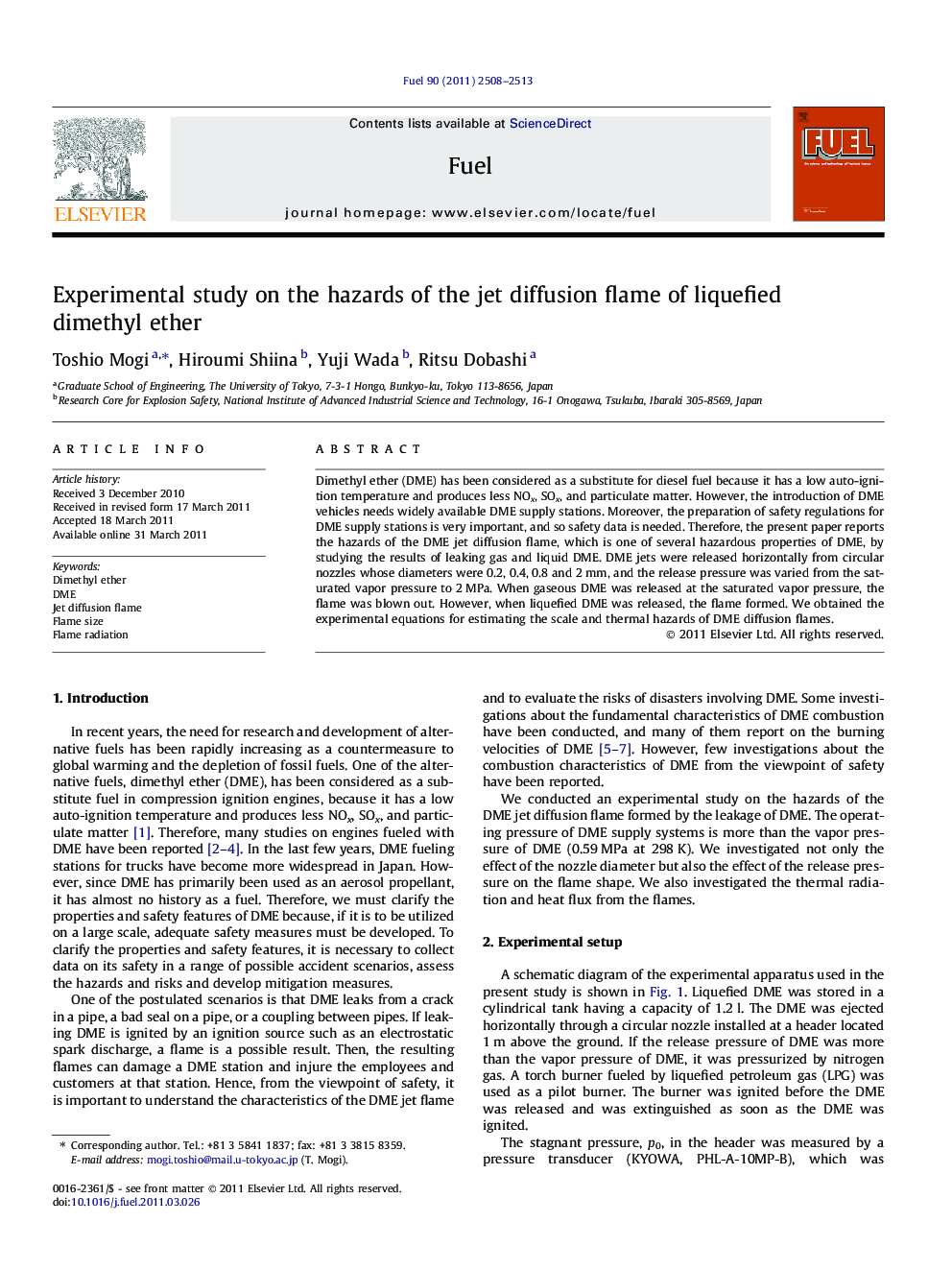| Article ID | Journal | Published Year | Pages | File Type |
|---|---|---|---|---|
| 206519 | Fuel | 2011 | 6 Pages |
Dimethyl ether (DME) has been considered as a substitute for diesel fuel because it has a low auto-ignition temperature and produces less NOx, SOx, and particulate matter. However, the introduction of DME vehicles needs widely available DME supply stations. Moreover, the preparation of safety regulations for DME supply stations is very important, and so safety data is needed. Therefore, the present paper reports the hazards of the DME jet diffusion flame, which is one of several hazardous properties of DME, by studying the results of leaking gas and liquid DME. DME jets were released horizontally from circular nozzles whose diameters were 0.2, 0.4, 0.8 and 2 mm, and the release pressure was varied from the saturated vapor pressure to 2 MPa. When gaseous DME was released at the saturated vapor pressure, the flame was blown out. However, when liquefied DME was released, the flame formed. We obtained the experimental equations for estimating the scale and thermal hazards of DME diffusion flames.
► If gaseous DME is released at the vapor pressure, the flame is blown out. In contrast, if liquefied DME is released, the flame is formed. ► An empirical correlation between the flame length and the mass flow rate is proposed as follows: Lf=8.5ml0.39. ► For estimation of the thermal risk around the jet flame, empirical equations are proposed.
